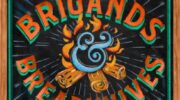When I sit and begin to write these reviews I am often fascinated by the history of the authors. Did the seed for the story come from some aspect own lives? Where the characters based on memorable individuals they knew? When dealing with horror or the fantastic what experiences lead them to start the story? There always seems to some hook but then you come across authors like M.R. James and all these questions lead nowhere. James would produce exactly 34 ghost stories over his life and is often regarded as one of the best ghost story writers. Given the fact that he was a life long late Victorian bachelor who spent his entire adult life at either Eton or Kings College it’s hard to guess where his inspiration came from. He was a medievalist by education with many of his scholarly works still highly regarded. For instance, who among us can ever forget the excitement of our first reading of his work “ The Latin hagiography of Aethelbert II of East Anglia”? Non-the–less he was a transformative author in the genre, removing the ghost story from its gothic moorings and clichés and placing it in contemporary times.
The characters involved in these ghostly encounters were mirrors of his own life: antiquaries, museum curators, professors etc. and he had certain strong feelings about how ghosts should act. In his preface he mentions that fact that “… the ghost should be malevolent or odious: amiable or helpful apparitions are all very well in fairy tales or in local legends but I have no use for them in a fictitious ghost story.” In another forward he talks about his style of having people go about their business and then “ …into this calm environment let the ominous thing put out its head, unobtrusively at first, and then more insistently until it holds the stage.” These relatively simple instructions would produce some of the finest ghost stories to see print. Clark Ashton Smith and H.P. Lovecraft would consider him to the best of the ghost story writers and even to this present day, modern horror writers like Stephen King and Jonathan Aycliffe are known to quote him as an influence. Below I’ve included a few of my favorites.
In “Lost Hearts” an elderly distant cousin suddenly takes in an orphaned boy. Placed under the care of his friendly servants in a large estate he is aroused at night by noises brushed off as “rats”. Later he is disconcerted to learn that his loving cousin has taken in orphans in the past all of which have unfortunately died under his care.
In “Oh whistle and I’ll come to you” a professor on a trip away from his college discovers a whistle while walking along the beach. Inscribed in Latin with the question “ Who is this who is coming?” the Professor blows the whistle and finds the note very striking. Soon thereafter he discovers to his horror exactly what is coming.
Tried as a witch for her eccentric behavior, a woman’s spirit takes up residence in the tree she was hung from. In “ The Ash tree” she torments the descendants of the local nobility responsible for her death with an army of small creatures that live in the tree.
Finding the papers of a deceased travel writer, the narrator learns of the writer’s travels to Scandinavia and his stay with a local noble family. While there he becomes fascinated with their distant ancestor, Count Magnus. In this story of the same name, he casually says aloud while passing the count’s mausoleum, “Count Magnus there you are. I should dearly like to see you”. Unfortunately for the writer this turns out to be an extraordinarily poor choice of words.
In “Casting the Runes” Mr. Dunning, a researcher for the British Museum has just written a poor review of the book “The Truth of Alchemy”. The author is not pleased and Mr. Dunning starts believing he may be cursed, especially when another reviewer dies in a freak accident. Perhaps his beliefs about alchemy are incorrect (I can only imagine how many authors would wish to inflict this horror on reviewers!).
“The story of a disappearance and an appearance” has the narrator suffering through a Punch and Judy show in which the puppets seem to be committing an actual murder.
In “The Mezzotint” a museum curator who purchases a mezzotint (a image created by a specific printmaking process) notices it to be changing every time he looks at it. To his horror it seems to show a corpse of a poacher rising from the grave and slowly moving toward the manor of the noble who hung him.
Looking through the stories it’s difficult to find much to say against them, the biggest complaint being his weak characterizations. The protagonists all seem to be stodgy professors or antiquarians. James had almost rote characterizations for members of the working class who he probably dealt with in a very limited fashion. For other authors, poor characterization would be a death knell for their story but for James these are small quibbles. The power of his stories is in pacing and mood. In the end the characters are there to keep the story moving to its chilling conclusion, not for the reader to form lasting bonds. The quality of the stories is excellent and presents a high water mark for other authors to strive for. If you like ghost stories this book should be the bedrock of your collection. Highly recommended.
© 2017 George Anadiotis





